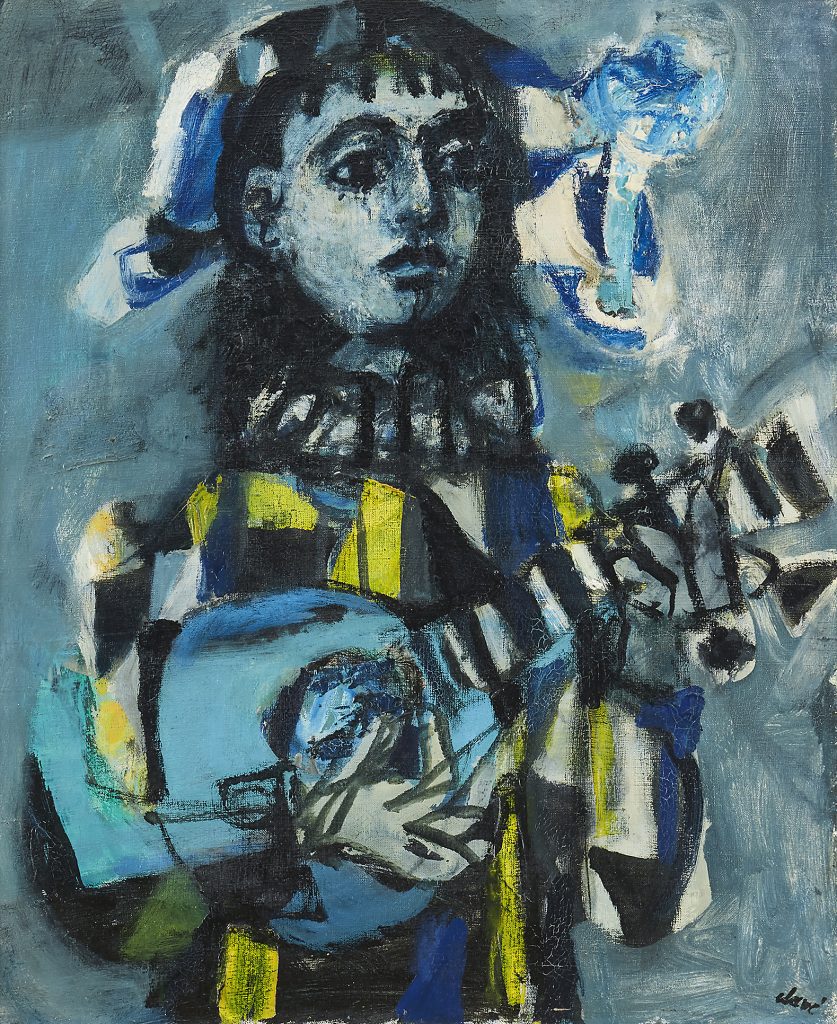“Harlequin” – Antoni Clavé

422. Antoni Clavé (Spain 1913‑2005). ”Harlequin”.
Signed Clavé. Oil on canvas, 65 x 54 cm.
SEK 500.000 – 600.000 € 51.000 – 62.000
As a disciple of the sculptor Ángel Ferrant as well as the painter José Mongrel, Catalan-born Antoni Clavé began his artistic training at the School of Fine Arts in Barcelona. Being affiliated to the republicans during the Spanish Civil War, in January 1939 he went into exile in France, where he spent some time in a refugee camp. Settling in Paris, he set up his first studio in Montparnasse in the early 1940’s. Shortly after, Clavé followed in the footsteps of the Parisian Dadaists and had his first one-man exhibition at the Au sans Pareil bookshop on 37 Avenue Kléber. From that on he frequented the Parisian autumn salons over the years, and eventually showed his work all around Europe in travelling exhibitions.
Before devoting himself to abstractions and collages, Clavé met Picasso in 1944 and began making figure compositions that were deeply influenced by Picasso’s work, featuring kings, children, still lives and – as seen here – harlequins. His style at the time had a sort of melancholic domesticity. The painting Harlequin featured in the auction was executed in the late 1940’s. In blueish tones as struck by moonlight, a somewhat heavy-hearted harlequin equipped with a mandolin solemnly serenades the viewers. Though portrayed in its characteristic chequered costume, Clavé emphasizes the harlequin’s development into a sort of sophisticated romantic hero rather than a comic trickster. It is no coincidence, presumably, that these theatrical depictions were executed during a time when Clavé also did numerous set designs as well as costume designs for ballet, theatre and film in Paris, Munich, London and New York. An artistic career that got him nominated for two Academy Awards (Best Art Direction and Best Costume Design) for his work on the 1952 film Hans Christian Andersen.
Clavé subsequently dealt with his artistry in a systematic way with lyrical abstractions, often combining traditional methods with the technique of collage. In 1960 he started doing sculpture, including bas reliefs, assemblages and totem-like sculptures. A few years earlier he had moved on from costumes to designing carpets and tapestries. The culmination of his recognition as a renowned artist was perhaps in 1978, when the Centre Pompidou Musée d’Art Moderne in Paris showed a comprehensive retrospective that included painting, collage and large tapestries. In 1990 Clavé himself inaugurated an anthological exhibition with all his paintings at the Palau Robert in his hometown of Barcelona, organized by the Government of Catalonia.